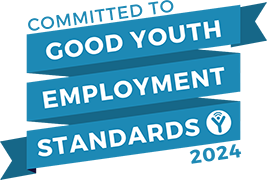With years of experience training apprentices in the oil and gas industries, Steve gives insight into his own experience with EPA and provides useful tips for other training providers in helping prepare for EPA.
(Note that Steve is answering these questions on behalf of himself)
What’s the main responsibility of a training provider with regards to End-Point Assessment?
I am very passionate about this subject; I believe the Training Provider’s main responsibility is to prepare the apprentice for End-Point Assessment. This responsibility should start at the first contact with the Employer simply because it’s a shared responsibility that needs to be planned for.
Employers should be made aware of this shared responsibility and the Training Provider, the Employer and Apprentice have to work closely together to make the End Point Assessment (EPA) a success. The central part of the process is an agreed ‘On the Job Training’ plan that satisfies the criteria covered in the standard and the Employer’s requirements.
Can you discuss the benefits of working closely with the registered assessor in preparing the apprentice for End-Point Assessment?
The Employer’s registered assessor may not be assessor trained, it’s got to be a benefit for a qualified assessor from the Training Provider to work closely with him/her to help with assessments and to ensure the evidence portfolio is relevant and clearly indexed and to monitor progress through the tracker.
By working together, it will be easier to plan and carry out observation assessments in the workplace and to coach and guide both the apprentice and registered assessor to recognise and record the required criteria in a form that will be useful and relevant at the EPA.
What activities do you undertake in preparing your apprentice for their EPA?
I talk with the Employer about the requirement for an agreed On the Job Training plan that conforms to the Science Industry Maintenance Technician (SIMT) Standard criteria and I manage the expectations of the Employer and the Apprentice.
I advise on what to produce in the way of an evidence portfolio and I have planned some mock EPAs, including lots of practical assessments. It’s important that the Apprentice should know his portfolio inside out and to that end, I get him to present it to me and sometimes someone from the Employer’s management team.
During the presentation, I ask lots of questions that the Apprentice can use his portfolio as an aide memoir to answer. The questions I ask also cover any weak areas or things that were not fully covered during the observations.
Did you incur any issues in the build-up to your apprentices End-Point Assessment?
I think the whole system got off to a poor start because both Employers and Training Providers were not fully aware of their responsibilities or prepared for what the change from Framework to Standard actually involved and how to make the change whilst still conforming to OFSTED requirements. In particular Training Providers didn’t, and I believe most still don’t, fully understand the importance of the agreed Training Plan or the necessity to work hand in glove with the Employer and the Apprentice.
If the Standards system is to work, then we must all embrace it fully and Training Providers must engage more closely with the Employers to develop a clear pathway through to EPA. Some training Providers are still clinging on to NVQs by running NVQ in parallel with a Standard, this is confusing the whole issue. I have found that some employers and apprentices don’t know what they have signed up to and get confused between the NVQ and the Standard.
I feel that Training Providers don’t want to let go of NVQs because they are worried that it will be difficult to justify the amount of money they drawdown from the Apprenticeship Levy if they are not actually assessing the Apprentices. Until Training Providers shake off the shackles of the old NVQs and fully embrace the Standards, they will never become integral to the system and get to grips with how they can impart quality to the system by working with Employers, EPAOs and Apprentices.
If you did how were they resolved?
I hope to alleviate some of these issues in my area by trying to educate the Employers and Apprentices about Standards. I have put together packs on the SIMT Standard and EPA and have been giving these to the Apprentices and their Employers, as well as discussing it in some depth with them.
I have been trying to persuade my particular Training Provider to implement the Standards system the way it was designed to work, changes are starting to filter through, however, I think NVQs are still a stumbling block. If EPAOs are to survive and flourish, then these issues will have to be dealt with. The light at the end of the tunnel is that SIAS are making inroads into this by holding awareness sessions.
One huge issue I have come across is the perceived difficulty in developing an On the Job Training Plan. Therefore, I have also been advising the Employers how they can easily put together a training plan themselves from the Planned Maintenance Routines (PMRs) held on their Maintenance Management System, they can formulate an equipment-based task list from the PMRs and add to the list any requirements for break down maintenance.
Then they can add any other generic training requirements they have for their particular workplace to this list. If we can formulate some sort of link to a Training Provider curriculum plan it would close the loop and it would mean that the Training Provider and Employer would have to work together on this. It’s frustrating, but, something has to happen soon if the country is to skill up to meet the requirements of the new global Britain.
How did you find the cooperation with SIAS in preparing for EPA?
In my opinion, SIAS is miles ahead of any other EPAOs I have had dealings with. I have always been able to phone up for advice, SIAS have an excellent website and the use of technology like LinkedIn, YouTube and Twitter makes them very accessible. Recently I attended a short training session at my workplace with the SIAS team and found it very informative. I have heard from some of my Apprentice Employers that SIAS have been or will be delivering support sessions with them. No other EPAO has this level of support out there.
What’s the advantage of registering your apprentices for EPA as soon as possible?
The obvious advantage is that SIAS will be able to plan ahead and have the resources in place for the EPA. It also means that there will not be any last-minute panic to get an EPA booked when required. It’s also good for motivation to have an end target date. In line with all of this, the training Provider should aim to send any relevant certification, for example, maths, English, BTEC and etc. to the EPAO as soon as possible.
It’s also a good idea to ask Employers to give an indicative EPA date, this may be difficult because of shift patterns and etc. however, it is only an indicative date and can be moved.
To Summarise:
I think there are many issues to overcome, however, if we can demonstrate a clear pathway to EPA by using an employer-specific On the Job Training Plan and educate Employers, Training Providers and the Apprentices about Standards, we can certainly make it a success story.





